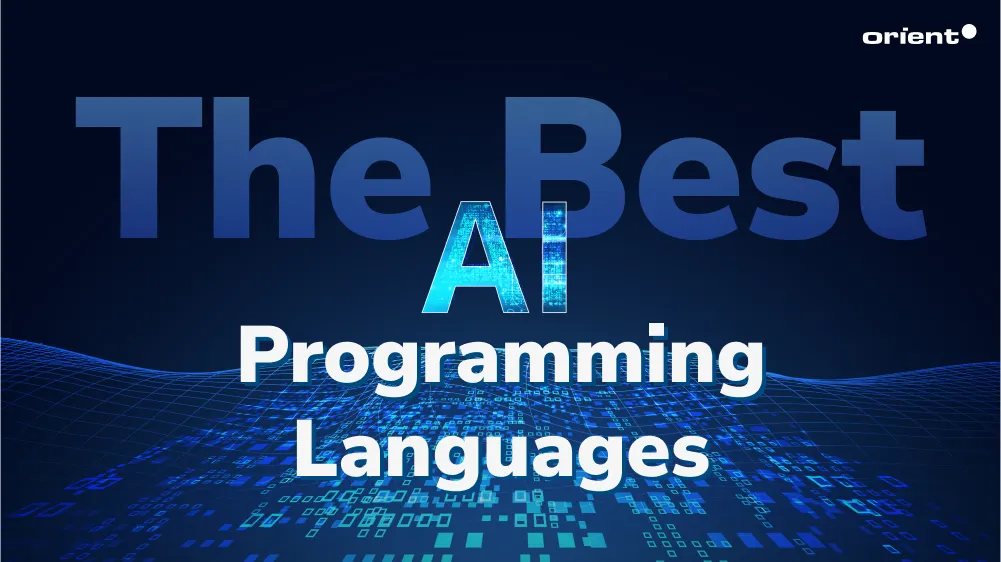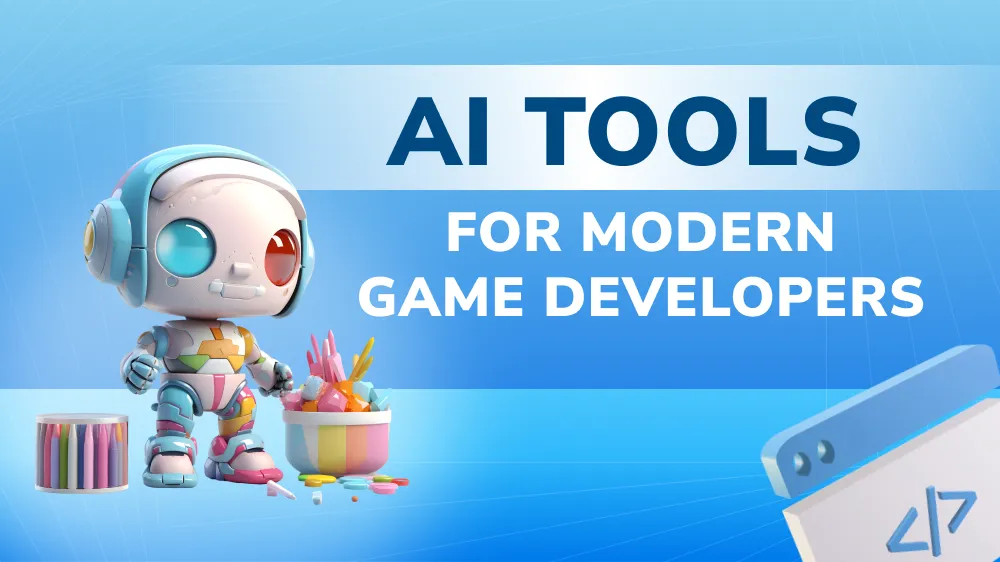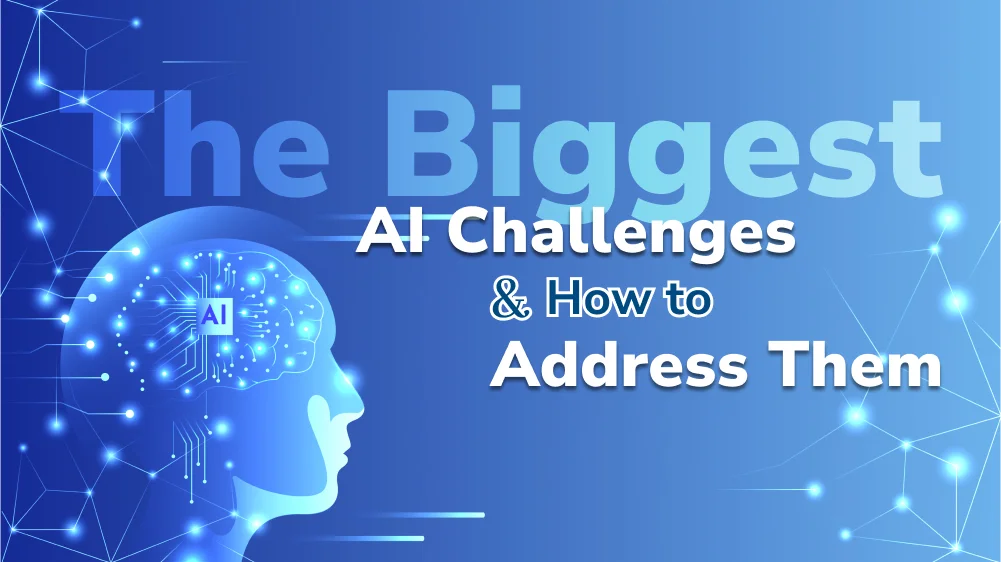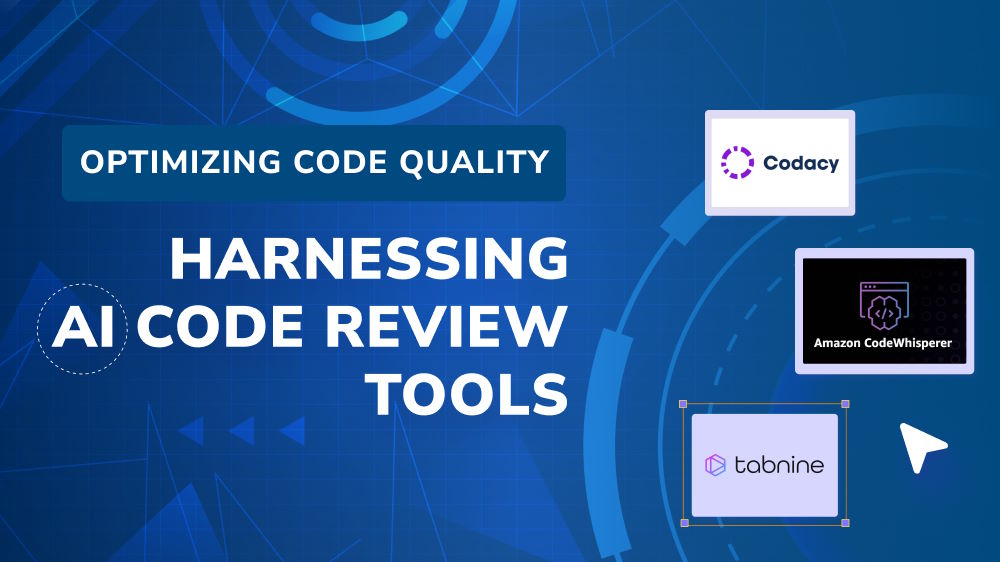The Best AI Programming Languages – 10 Recommendations

Content Map
More chaptersNowadays, artificial intelligence is a trending topic. In today’s discussion, we are going to delve into one of its relevant aspects: AI programming and the right language for developing AI applications.
With a plethora of different programming languages available for various types of software development, AI developers certainly have as many choices to choose from. In fact, some languages might work better than others, and it depends on the needs and preferences of a specific project. Therefore, the best programming language for AI development is different for each and every project.
So, to find the answer to your question: Which are the best languages for machine learning capabilities? You need to research all available options thoroughly before making any decision about which one to use in your next programs.
What Is an AI Programming Language?
To put it briefly, artificial intelligence development is how software developers conceptualize the entire lifecycle of developing an AI model or system.
AI development involves the logic programming paradigm largely based on the idea of computing models and machine learning algorithms that are capable of mimicking human intelligence in complex cognitive tasks (E.g., problem-solving, reasoning, learning, and perception). In the context of AI programming, data science holds a central role as it is the foundation for training sophisticated AI models.
Beyond logic programming, it includes a diversity of techniques like neural networks, deep learning, natural language processing (NPL), etc. These techniques are implemented through a specialized programming language specifically designed to bring in features ideal for building machine learning programs and complex algorithms. Contrary to other languages, AI programming languages are optimized for mathematical and statistical computing that are heavily used in AI development.
The Best Programming Languages for Artificial Intelligence
In the following list, you will encounter many programming languages that are currently top performers in the world of software engineering and also some with more humble reputations.
Python

At the moment when we talk about AI programming languages, Python is the king of the hill. Statistics by PYPL indicate that Python tops the list and has become the most popular programming language with a 28.11% market share. Python is a general-purpose programming language trusted for various use cases, such as web app development, scientific computing, automation, the Internet of Things (IoT), etc.
Python has a strong user community behind it and offers numerous frameworks that are meant to make life easier when working with AI algorithms. The interpreted language also stays relevant, adding new features while ensuring backward compatibility, so old code does not need updating.
Some of its most popular machine learning libraries are:
- Scikit-learn: Scikit-learn is a user-friendly library for classical ML algorithms such as classification, regression, clustering, and dimensionality reduction. It is built on NumPy, SciPy, and matplotlib, hence making it a powerful tool for data analysis and model building.
- TensorFlow: A popular open-source library for building machine learning and deep learning applications. TensorFlow provides tools for building neural networks, running distributed training, and deploying models on various platforms.
- Theano: An advanced mathematical library that lets AI engineers create neural networks and other sophisticated algorithms without coding the mathematical equations by hand.
JavaScript

Many developers prefer JavaScript. Its popularity is partly due to the fact that it can run on the client-side in web browsers, but it is also a flexible programming language in general.
JavaScript is a versatile programming language mostly used in web development due to its dynamic typing, object-oriented nature, and simplified syntax. However, its ever-growing community has created extensive libraries that expand its role in AI programming:
- Dialogflow and Rasa: In AI chatbot development, these are machine learning frameworks that can be integrated with JavaScript to build conversational interfaces powered by AI. Dialogflow is a Google service that supports multiple languages, including JavaScript, while Rasa is an open-source framework written in Python that can interact with JavaScript applications.
- TensorFlow.js and Brain.js: Enable developers to implement ML algorithms directly in the browser so tasks such as image recognition, NPL, and predictive analytics, can be carried out using JavaScript.
- ConvNetJS: A JavaScript library for machine learning that lets developers build neural networks.
- Math.js: A library containing various mathematical and statistical functions.
- Node-fann: Another open-source machine learning library, this one designed specifically with artificial neural networks in mind.
Java

Java for AI is also a good choice for many projects or companies looking to conduct AI development, especially those that are heavy on object-oriented programming. Since Java boasts an extensive library and can run on all kinds of hardware, it is acknowledged as a highly flexible language. Furthermore, Java is also one of the easiest languages to integrate with other tools, which makes it ideal for big data. This coding language can be utilized in conjunction with Hive or Pig for data processing, particularly large datasets.
Some of Java’s libraries are:
- Apache Flink: It is a framework and a distributed processing engine for stateful computations over bounded and unbounded data streams. Apache Flink offers developers an infrastructure for building stream-processing applications that can be deployed across multiple servers.
- Deeplearning4j: Known as an open-source, distributed deep-learning library for the JVM, Deeplearning4j is designed to build deep neural networks and ML models with Java. It also supports deployment across Apache Spark and Hadoop clusters.
- Encog: An ML framework that supports a variety of models, including neural networks, support vector machines, and genetic algorithms. Encog is made for Java and .NET.
- PredictionIO: Built on top of a state-of-the-art open-source stack (Spark, HBase, and Spray), this ML server simplifies the creation of predictive engines for recommendation, classification, and other machine learning tasks. It integrates well with Java applications.
- Weka: Waikato Environment for Knowledge Analysis - a prevalent, open-source library for data mining, preprocessing, classification, regression, clustering, association rules mining, visualization, and feature selection tasks. Due to Weka’s user-friendly interface and easy integration with other tools, it becomes a suitable choice for beginners in developing AI systems.
C#

C# (pronounced as “C sharp”) is a modern, object-oriented programming (OOP) language created and maintained by Microsoft as part of the .NET framework. Introduced in 2000, C# has evolved significantly, and it is now utilized in various domains: Web development, desktop app development, and game development with Unity.
Even though C# is not as commonly associated with machine intelligence development as Python or Java, C# is considered a proper choice for AI development under certain circumstances. Thanks to robust features, integration capabilities, and compatibility with various AI development frameworks and libraries, C# has been increasingly adopted in more projects.
Some renowned frameworks available in C# include:
- Accord.NET: A .NET machine learning framework featuring multiple algorithms, such as SVMs, decision trees, clustering, and image processing. Moreover, Accord.NET also provides tools for computer vision, signal processing, and statistics.
- ML.NET: An open-source, cross-platform library developed by Microsoft, ML.NET offers functionality for building various types of models, from decision trees to deep neural networks with C#. ML.NET supports a variety of algorithms, including regression, classification, clustering, and deep learning as well.
- Microsoft Cognitive Toolkit (CNTK): A powerful machine learning library that supports both deep learning and traditional machine learning algorithms. CNTK is designed for high performance and scalability and is capable of parallelizing computations across multiple CPUs and GPUs, as well as across machines.
- TensorFlow.NET: A .NET binding for TensorFlow, an open-source machine learning development framework created by Google, that enables developers to leverage TensorFlow’s capabilities within the vast ecosystem of C#. TensorFlow.NET allows the use of TensorFlow’s extensive machine learning and deep learning functionalities in C# applications, which makes it easier to integrate TensorFlow models into .NET projects.
R

R is one of the top languages well-suited to building machine learning algorithms and is frequently used in academic research. R can be a good option if the company or project needs to use statistical models for machine learning. Companies can use R in conjunction with Hadoop through packages like RHadoop or RevoScaleR or with Spark using the Sparklyr package to create their own models. Alternatively, they can use an R package to access existing models.
Some of its most popular libraries are:
- RevoScaleR: A proprietary library for performing statistical analysis on large datasets, which can be used in harmony with Spark or Hadoop.
- MASS: A library contains many functions and datasets for statistical analysis and machine learning.
- dplyr: A modern and efficient package for data manipulation designed to handle large datasets more easily than its predecessor, plyr.
C++

C++ is a strong choice for projects that require efficient interaction with hardware, such as those involving artificial intelligence.
C++ is a middle-level programming language combining the efficiency and control of low-level programming with the abstractions of high-level programming. So, it is suitable for writing efficient code that maximizes hardware performance. Due to its performance, C++ is often seen being used in the video game industry or in other performance-critical applications (E.g., real-time systems and financial systems).
Some of its most popular libraries are:
- OpenCV: Open Source Computer Vision (OpenCV) library provides a plethora of functions and tools for processing images and videos. This library presents essential capabilities for object detection, facial recognition, feature extraction, and more, which means a lot when you develop AI applications involving computer vision.
- Shark: An open-source C++ library is created with a focus on efficient implications of ML algorithms and complex data structures. Shark introduces various supervised and unsupervised learning techniques, such as neural networks, clustering, and dimensionality reduction.
- Eigen: This C++ template library for linear algebra operations provides effective implementations of matrix and vector operations. When used in AI programming, Eigen is used for numerical computations, machine learning algorithms, and other mathematical tasks.
Go

Go, or Golang, is a relatively new programming language that’s starting to be used in artificial intelligence applications, mostly because it offers CPU and memory optimizations. Some experts say that its high-level features make it easier to read code and develop code for parallel computing.
- Gorgonia: Gorgonia is an ML library for Go that provides tools for building neural networks, symbolic reasoning, and automatic gradient calculation. It is well-suited for deep learning applications and mathematical computations.
- Go-Torch: Go-Torch is a library that provides Go bindings for the PyTorch deep learning framework, allowing Go developers to leverage PyTorch’s capabilities for machine learning and NLP tasks.
- GoNN: GoNN is a library for creating and training neural networks in Go. It uses evolutionary computation to train neural networks and other machine learning models, but it may not be as advanced or feature-rich as other libraries like Gorgonia.
- GoLearn: GoLearn is an open-source machine learning library for Go that offers various tools and examples for building machine learning applications, helping developers learn how to implement machine learning models in Go.
Matlab

As a proprietary programming language, Matlab isn’t open-source. Matlab has powerful numerical computing capabilities and extensive libraries for mathematical operations and image processing. While Matlab can be expensive, its range of functionalities and specialized toolboxes make it worth picking up for professionals in fields requiring advanced mathematical computations and data analysis.
Some of Matlab’s popular libraries are:
- MATLAB Coder: A tool that allows users to convert programs into standalone C or C++ versions.
- Image Processing Toolbox™: This is a set of tools for image processing and analysis.
- Deep Learning Toolbox: A powerful toolset for building and training deep neural networks in Matlab. It offers various architectures and algorithms, as well as pre-trained models for tasks like image classification and object detection.
Julia

Julia is a newer high-level programming language that’s only recently become popular in the realm of AI development. It’s growing in popularity because it can be used to run on databases like Hadoop and Spark and is easily distributed across multiple machines, making it good for big data and large-scale projects.
Julia boasts a vast ecosystem of packages and libraries for domains related to AI programming, like data science, machine learning, and optimization. These packages are managed through its built-in package manager called Pkg.
Some of its most popular libraries are:
- DataFrames: This package provides a data structure similar to an R or Python data frame, which is meant to make large datasets easier to work with.
- Distributions: This library contains functions and methods needed to generate random numbers and samples, including distributions like the normal distribution and uniform distribution.
- JuMP: A modeling language for mathematical optimization problems.
Scala

The term stands for “scalable language,” reflecting its design goal to ramp up with users’ demand. Scala is a versatile language that combines object-oriented and functional programming paradigms. It has gained traction in the field of AI development due to its features, which are well-suited for such applications. Typically, Scala’s strong type safety and interoperability with Java (and thus Java-based AI libraries).
Consider the following libraries for your AI project in Scala:
- Breeze: A robust library tailored for numerical computing tasks. Breeze offers functions for scientific computing, machine learning, and data mining, including operations in linear algebra, matrix manipulation, optimization algorithms, and more.
- Almond: Almond is an open-source library that provides a high-level API for creating neural networks in Scala. It integrates with popular deep learning frameworks, such as TensorFlow and PyTorch.
- Apache Spark: This is a distributed computing framework that leverages Scala as its primary language. Apache Spark offers extensive support for big data processing, ML, and real-time analytics. Developers utilize Spark’s MLlib library for scalable machine learning tasks when it comes to the development of AI models on large datasets.
These ten AI programming languages are only a few in a vast array of options available to developers when it comes to AI development. If none of these languages sparks your interest or suits your requirements, you can still explore many other options like Kotlin, Prolog, Rust, Common Lisp, and heaps more.
Last Notes
The potential of artificial intelligence is still limitless, so do not hesitate to get started with your own AI endeavor today.
Deciding which programming language to use for your artificial intelligence project can be difficult as you have too many options on the plate. Make sure you pick the best one that aligns with your project development goals and the expertise of your employees. If you would like to expand your squad with augmented talent or start a whole new dedicated team of experts with AI-specific skills, let Orient Software help you.
You can totally rely on us as we are a software outsourcing company, not any service provider but a leading one based in Vietnam. At Orient, we provide a comprehensive suite of services, ranging from custom software development to QA testing, IT staff augmentation, and more. You can delegate your outsourcing needs to us. For further discussion, do not hesitate to drop a line and wait for our response within three business days.







